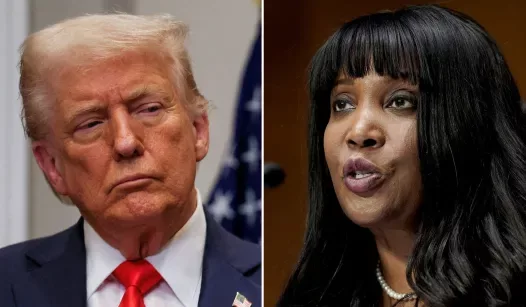Former President Donald Trump’s recent efforts to dismiss a Federal Reserve governor have sparked significant debate within political circles. While his actions may raise eyebrows regarding their motivation, they do adhere to the procedural guidelines set forth by Congress. This situation not only highlights the complexities of the Federal Reserve’s governance but also illustrates the intricate relationship between politics and monetary policy.
The Federal Reserve, established in 1913, serves as the central bank of the United States, tasked with regulating the nation’s monetary policy and ensuring financial stability. The structure of the Fed includes a Board of Governors, which is appointed by the President and confirmed by the Senate. This board is responsible for making critical decisions that influence interest rates, inflation, and overall economic health. Given the importance of these decisions, the relationship between the President and the Fed can often be contentious, particularly during times of economic uncertainty.
Trump’s attempt to remove a sitting Fed governor raises questions about the balance of power and the independence of the Federal Reserve. Typically, the Fed operates free from direct political influence to maintain credibility and effectiveness in managing the economy. However, the President does possess the authority to appoint or dismiss governors, provided the reasons align with the stipulations outlined by Congress. This legal framework allows for a degree of oversight, but it also opens the door for potential political maneuvering.
Critics of Trump’s actions argue that the motivations behind his attempt to fire the Fed governor are not purely rooted in policy disagreements but may instead reflect a desire to exert control over the central bank’s operations. This perspective underscores a broader concern about the politicization of economic policy, especially when the decisions made by the Fed can have far-reaching implications for American households and businesses.
Supporters of Trump, on the other hand, contend that his actions are a legitimate exercise of presidential power and reflect a necessary push for accountability within the Federal Reserve. They argue that the Fed’s policies should align with the broader economic goals of the administration, particularly in times of crisis. This viewpoint emphasizes the dynamic nature of economic governance and the need for responsiveness to changing economic conditions.
As the debate continues, it is essential to consider the implications of such actions on the Federal Reserve’s credibility and the broader economic landscape. The Fed’s ability to function independently is crucial for maintaining public trust and ensuring effective monetary policy. If political pressures begin to shape the Fed’s decisions, it could undermine its effectiveness and lead to increased volatility in financial markets.
Moreover, the conversation around Trump’s attempt to dismiss a Fed governor highlights the ongoing tensions between economic policy and political interests. In a polarized political climate, where every action is scrutinized and debated, the intersection of these two realms becomes increasingly complex. The implications of this situation extend beyond the immediate question of one governor’s position; they raise fundamental questions about the future of economic governance in the United States.
In conclusion, while Trump’s attempt to fire a Federal Reserve governor may technically comply with congressional rules, it serves as a reminder of the delicate balance between political power and economic independence. As the nation navigates the challenges of economic recovery and growth, understanding the nuances of these interactions will be crucial for both policymakers and the public. The ongoing dialogue surrounding the Federal Reserve’s role in the economy will undoubtedly continue to evolve, reflecting the changing landscape of American politics and its impact on economic policy.
